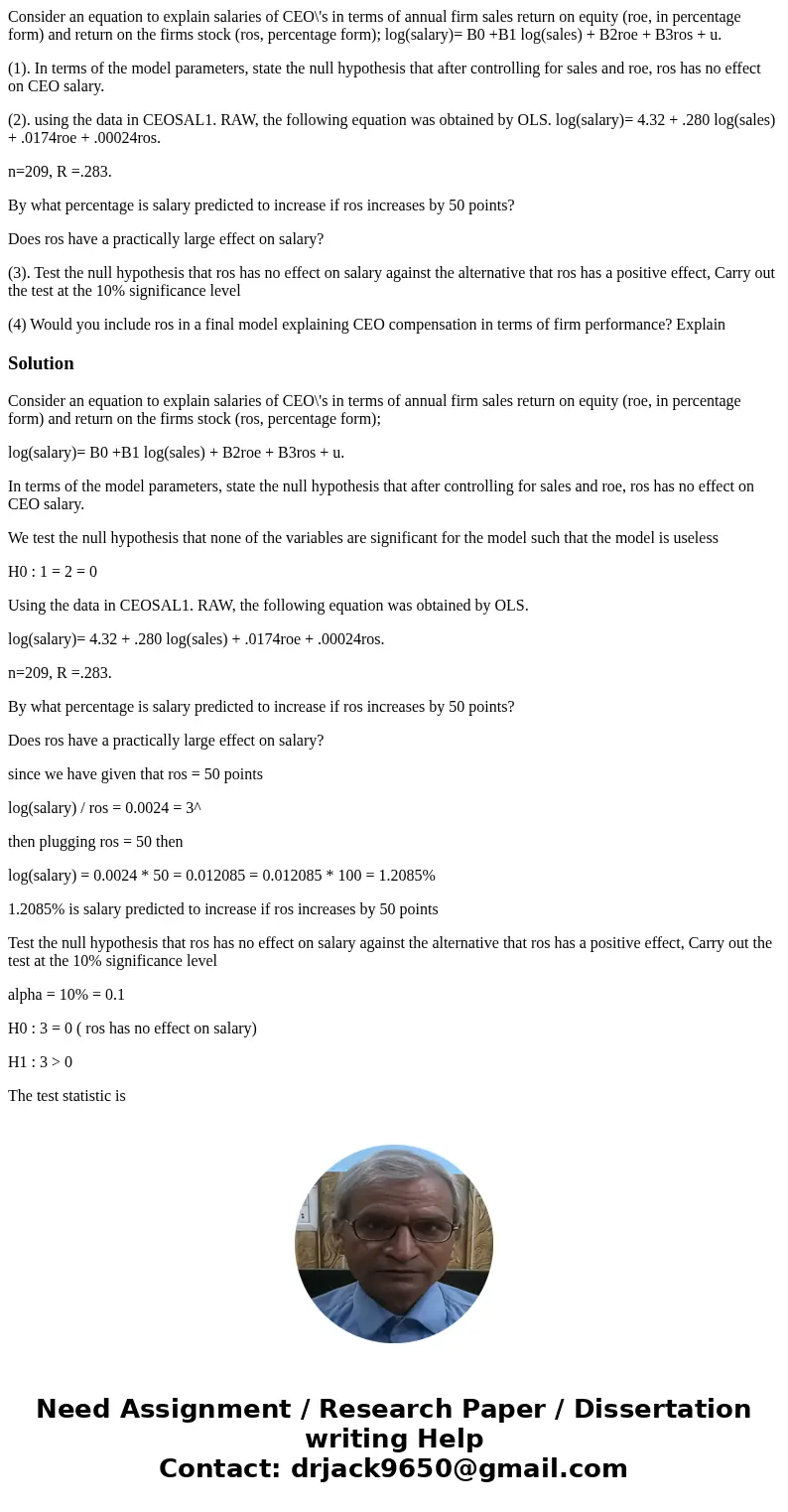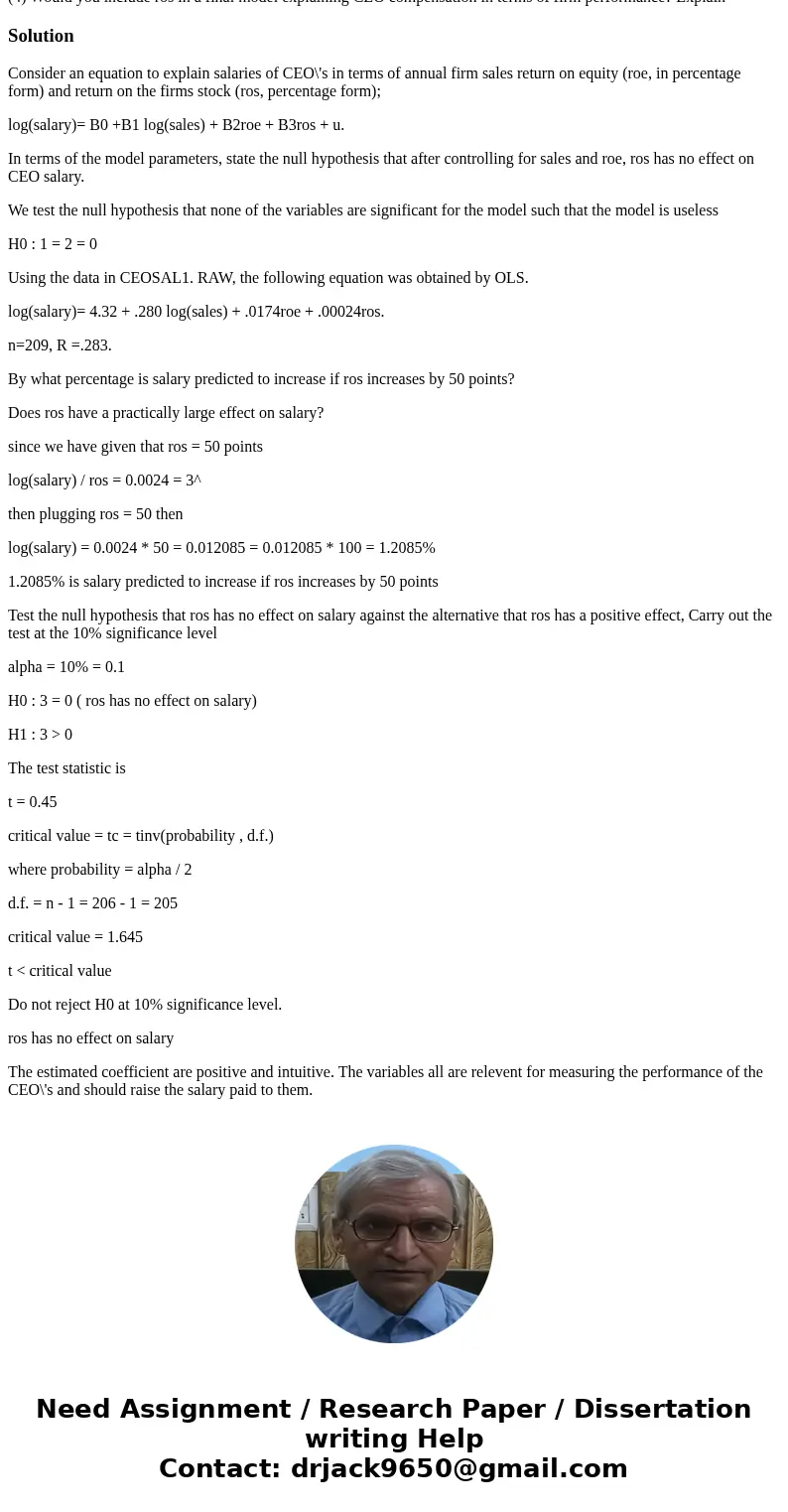Consider an equation to explain salaries of CEOs in terms of
Consider an equation to explain salaries of CEO\'s in terms of annual firm sales return on equity (roe, in percentage form) and return on the firms stock (ros, percentage form); log(salary)= B0 +B1 log(sales) + B2roe + B3ros + u.
(1). In terms of the model parameters, state the null hypothesis that after controlling for sales and roe, ros has no effect on CEO salary.
(2). using the data in CEOSAL1. RAW, the following equation was obtained by OLS. log(salary)= 4.32 + .280 log(sales) + .0174roe + .00024ros.
n=209, R =.283.
By what percentage is salary predicted to increase if ros increases by 50 points?
Does ros have a practically large effect on salary?
(3). Test the null hypothesis that ros has no effect on salary against the alternative that ros has a positive effect, Carry out the test at the 10% significance level
(4) Would you include ros in a final model explaining CEO compensation in terms of firm performance? Explain
Solution
Consider an equation to explain salaries of CEO\'s in terms of annual firm sales return on equity (roe, in percentage form) and return on the firms stock (ros, percentage form);
log(salary)= B0 +B1 log(sales) + B2roe + B3ros + u.
In terms of the model parameters, state the null hypothesis that after controlling for sales and roe, ros has no effect on CEO salary.
We test the null hypothesis that none of the variables are significant for the model such that the model is useless
H0 : 1 = 2 = 0
Using the data in CEOSAL1. RAW, the following equation was obtained by OLS.
log(salary)= 4.32 + .280 log(sales) + .0174roe + .00024ros.
n=209, R =.283.
By what percentage is salary predicted to increase if ros increases by 50 points?
Does ros have a practically large effect on salary?
since we have given that ros = 50 points
log(salary) / ros = 0.0024 = 3^
then plugging ros = 50 then
log(salary) = 0.0024 * 50 = 0.012085 = 0.012085 * 100 = 1.2085%
1.2085% is salary predicted to increase if ros increases by 50 points
Test the null hypothesis that ros has no effect on salary against the alternative that ros has a positive effect, Carry out the test at the 10% significance level
alpha = 10% = 0.1
H0 : 3 = 0 ( ros has no effect on salary)
H1 : 3 > 0
The test statistic is
t = 0.45
critical value = tc = tinv(probability , d.f.)
where probability = alpha / 2
d.f. = n - 1 = 206 - 1 = 205
critical value = 1.645
t < critical value
Do not reject H0 at 10% significance level.
ros has no effect on salary
The estimated coefficient are positive and intuitive. The variables all are relevent for measuring the performance of the CEO\'s and should raise the salary paid to them.


 Homework Sourse
Homework Sourse